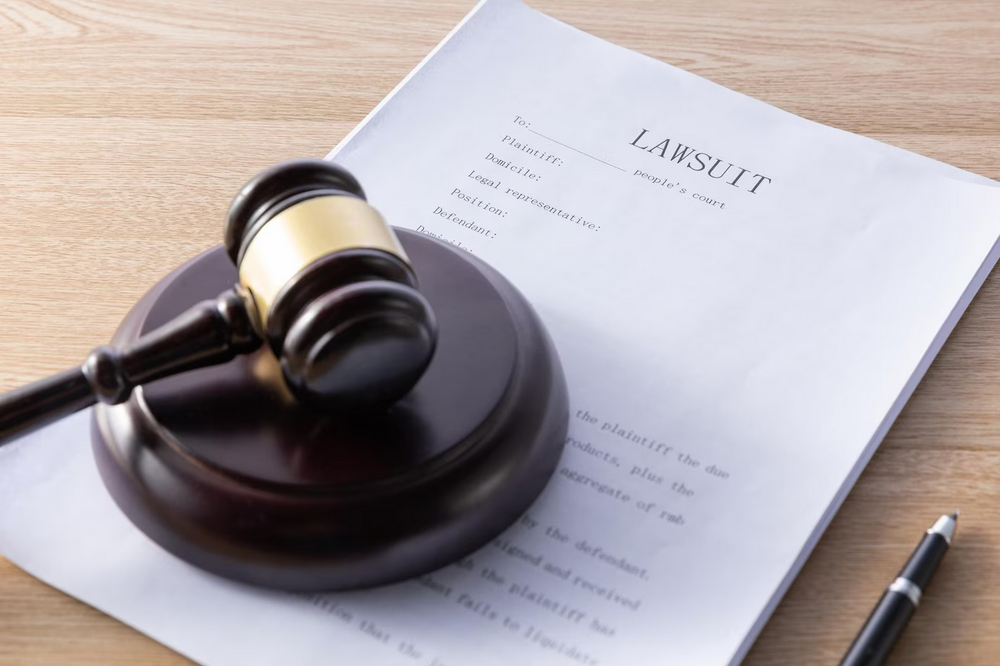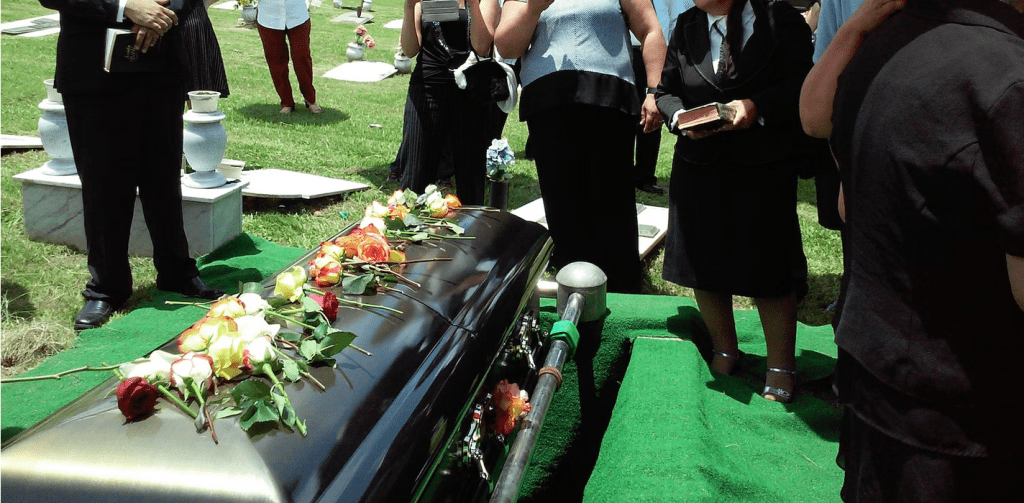Wrongful death is a legal term that refers to a death caused by the negligence, carelessness, or recklessness of another.
Wrongful death claims are civil actions taken by the surviving family members of the deceased person to pursue compensation for damages resulting from the death. The claims are complex and require the assistance of an experienced attorney to navigate the process.
This section provides an overview of wrongful death claims, including who can file a claim, establishing liability, recoverable damages, and statutes of limitations.
Understanding Wrongful Death Claims
Wrongful death claims are civil lawsuits that are brought when a person dies due to the negligence actions or lack of due care of another individual, business, or entity.
Common causes of wrongful death include medical malpractice, motor vehicle accidents, workplace accidents, and defective products.
The legal elements of a wrongful death claim require that the family member or representative of the deceased prove that the death was caused by the negligent or wrongful act of another, that there are surviving family members who have suffered monetary damages, and that a personal representative has been appointed to administer the claim.
Definition of Wrongful Death
A wrongful death is a legal term referring to a situation in which a person is killed as a result of the careless or negligent actions of another.
A wrongful death claim is a civil lawsuit brought by the surviving family members of the deceased against the person who caused the death.
This type of legal action can be sought in the event that a death was caused by:
- Negligence
- Intentional acts
- Strict liability
The claim is intended to compensate the family for any medical expenses, funeral expenses, lost wages, and pain and suffering endured by the deceased.
Additionally, it can also serve to punish the wrongdoer and to prevent similar tragedies from occurring in the future.
A wrongful death lawsuit can be brought against another individual, a business, or a government agency.
The legal action is intended to compensate the family for the harm caused by the wrongful death and to hold the responsible parties accountable for their actions.

Common Causes of Wrongful Death
When a death is caused by the careless or negligent actions of another, the family of the deceased may be eligible to seek legal recourse in the form of a wrongful death lawsuit.
Common causes of wrongful death include medical malpractice, motor vehicle accidents, workplace accidents, and criminal acts.
Medical malpractice is a common cause of wrongful death, and occurs when a healthcare professional fails to act in accordance with the accepted standards of care. When this occurs and a patient dies as a result, the healthcare professional may be held liable for the wrongful death.
Motor vehicle accidents, such as those caused by distracted or drunk driving, are another common cause of wrongful death. Negligence is a factor in many car accidents, and when a person’s negligence causes the death of another, the family may have grounds for a wrongful death lawsuit.
Similarly, workplace accidents can also be grounds for a wrongful death suit when the accident is caused by an employer’s negligence.
Finally, criminal acts are another major cause of wrongful death. When an individual is killed as a result of another person’s intentional or reckless behavior, the family may file a wrongful death suit against the perpetrator.
Legal Elements of a Wrongful Death Claim
Seeking legal recourse in the form of a wrongful death lawsuit requires meeting certain legal elements.
To begin, courts must be able to demonstrate that the defendant was negligent or acted in a wrongful manner.
The defendant’s actions must have caused the death of the plaintiff, either through a direct or indirect act.
In order for a wrongful death claim to be considered, the court must also identify the surviving family members or beneficiaries of the deceased.
The court must determine that the surviving family members or beneficiaries have suffered injury, loss, or damages due to the wrongful death.
This can include financial losses, such as medical bills or funeral expenses, as well as emotional losses, such as pain and suffering.
While the specifics of the legal elements may vary from state to state, courts generally require that these elements be met in order to pursue a wrongful death claim.
Who Can File a Wrongful Death Claim?
In the event of an untimely passing, legal recourse may be available to those affected. Wrongful death claims are a form of civil action wherein an individual has died as a result of another party’s negligence or recklessness.
In such cases, the deceased’s surviving family members may be eligible to file a wrongful death claim in court. Depending on the particular state, those eligible to file a wrongful death claim may include the deceased’s spouse, children, parents, or other close relatives. Furthermore, in some states, a personal representative of the estate may file the claim on behalf of the deceased’s surviving family members.
Typically, the suit is filed against the person or entity responsible for the death and seeks to recover damages for the surviving family members. Damages can include medical expenses related to the death, funeral expenses, and loss of companionship or financial support.
All states have statutes of limitations for wrongful death claims, so it is important to seek legal advice as soon as possible to ensure that the claim is filed within the allotted timeframe.
Establishing Liability in a Wrongful Death Claim
When discussing the issue of establishing liability in a wrongful death claim, one must consider the essential elements of proving negligence and the evidence required for doing so.
The main element of negligence is that the death of the person was caused by the wrongful or negligent conduct of another party.
In order to establish liability in a wrongful death claim, evidence such as witness statements, photographs, medical records, and police reports must be collected and presented to the court.
Proving Negligence
Establishing negligence is a critical component in establishing legal accountability for a fatality. To be considered negligent, the defendant must have failed to exercise the level of care that a reasonable person would have in a similar situation.
When proving negligence in a wrongful death case, plaintiffs must demonstrate four elements: duty, breach of duty, causation, and damages.
The first element, duty, requires that the defendant had a duty to take reasonable care and protect the deceased from foreseeable risks.
The second element, breach of duty, requires that the defendant failed to meet the standard of care expected of them.
The third element, causation, requires that the death was a direct result of the defendant’s actions or inactions.
The final element, damages, requires that there are measurable losses that are directly related to the death of the deceased.

Evidence Required for Establishing Liability
Liability in a wrongful death claim requires evidence to demonstrate the defendant’s breach of their duty of care, the connection between that breach and the deceased’s death, and the losses suffered by the victim’s family.
In order to prove negligence and establish liability, the plaintiff must show that the defendant owed a duty of care to the deceased, that the duty of care was breached, and that the breach was the direct cause of the death.
To do this, the plaintiff must present evidence that the defendant acted or failed to act in a way that a reasonable person would not in a similar situation. Evidence such as eyewitness accounts, video recordings, medical records, police reports, expert testimony, and autopsy or toxicology reports can be used to prove the defendant’s negligence.
The plaintiff must also present evidence to demonstrate the losses suffered by the deceased’s family, such as loss of companionship, medical expenses, and funeral costs.
In some cases, the plaintiff may also be entitled to punitive damages, which are awarded as a form of punishment for the defendant’s conduct. To prove the plaintiff’s entitlement to punitive damages, the plaintiff must show that the defendant’s actions were intentional or showed a wanton disregard for the deceased’s safety.
Evidence such as emails, statements, and other documents can be used to demonstrate this.
Recoverable Damages in a Wrongful Death Claim
In a wrongful death claim, economic damages may include medical expenses, funeral and burial costs, and lost wages.
Non-economic damages may include pain and suffering, loss of companionship, and emotional distress.
In many cases, a wrongful death claim may also include punitive damages, which are intended to punish the wrongdoer and deter others from similar behavior.
Economic Damages
Economic Damages refer to tangible losses resulting from the incident.
These may include medical bills, funeral expenses, and lost wages.
Economic damages are divided into two categories: those that are measurable and those that are not measurable.
Measurable economic damages can include hospital bills, medical costs, and other expenses related to the deceased’s death or injury.
Non-measurable economic damages are typically more difficult to calculate, and may include the value of the deceased’s lost wages, benefits, and services, as well as the lost companionship and support of the deceased.
It is important to note that economic damages are not intended to compensate for the grief and pain caused by the death, or to punish the person responsible.
Rather, economic damages are meant to compensate the survivors for the financial losses that they incurred as a result of the wrongful death.
Non-Economic Damages
The loss of companionship and support of the deceased, as well as the pain and grief resulting from the death, are among the non-economic damages that may be recovered in wrongful death claims.
Non-economic damages are typically intangible items that cannot be easily quantified, such as an individual’s pain and suffering, loss of companionship, or mental anguish.
Non-economic damages can be both compensatory and punitive in nature.
Compensatory damages are intended to compensate the deceased’s surviving family members for their losses, such as the loss of the deceased’s companionship, emotional pain, or mental anguish.
Punitive damages, on the other hand, are intended to punish the wrongdoer for their actions and prevent similar actions from occurring in the future.
Punitive damages may be awarded if the wrongdoer’s conduct was particularly egregious or malicious.
In order to recover non-economic damages, the plaintiff must prove that the death of the deceased was the result of the defendant’s negligence or malicious conduct.
Statutes of Limitations for Wrongful Death Claims
Statutes of Limitations for Wrongful Death Claims impose time limits on when a claim can be filed.
Generally, the time period for filing a claim begins when the death occurs, and the time frame in which a claim must be filed will vary from state to state.
However, there are exceptions to the Statute of Limitations in certain circumstances, such as when the death was caused by a minor or when the cause of death was initially unknown.
Time Limits for Filing a Claim
Filing a claim for a loved one lost can be an emotionally taxing process, but it is important to be aware of any time limits that may apply.
Depending on the state, the statute of limitations for filing a wrongful death claim can range from one year to six years. The clock typically starts when the death occurs, but may also begin when the claimant discovers the cause of death.
Individuals must be aware of the time limit in the state in which the wrongful death occurred. It is important to act quickly to protect the rights of the victim and their loved ones.
Here are five key points to consider when filing a wrongful death claim:
- File the claim before the statute of limitations expires
- Take into account any special circumstances that may affect the statute of limitations
- Document any evidence of the wrongful death
- Gather witness testimony
- Consult with an experienced wrongful death attorney
Exceptions to the Statute of Limitations
In some cases, exceptions may exist to the established time frame for filing a legal action. These exceptions are known as tolling of the statute of limitations. The purpose of tolling is to provide an exception to the established time frame if certain circumstances exist which would make it unfair to strictly adhere to the established time frame.
Generally, tolling is only granted if the plaintiff was prevented from filing a claim because of certain circumstances. Such circumstances may include, but are not limited to, a party being a minor at the time of the wrongful death, a party being unable to locate an essential party to the legal action, or a party being mentally incapacitated. In addition, the statute of limitations may be tolled if the wrongful death was caused by a criminal act such as murder. In such cases, the time frame for filing a wrongful death claim may be tolled until the criminal case is resolved.
In some states, the statute of limitations may be tolled due to a defendant’s concealment of the facts of the wrongful death. To support such a claim, the plaintiff must prove that the defendant had knowledge of the facts of the wrongful death and knowingly concealed them from the plaintiff. If granted, this may provide the plaintiff additional time to bring forward a legal action.
Such tolling of the statute of limitations may also be granted if the defendant committed fraud or misrepresentation in order to prevent the plaintiff from filing a legal action. In this case, the plaintiff must prove the defendant’s intentional act of fraud or misrepresentation in order to extend the statute of limitations.
Navigating the Wrongful Death Claim Process
The process of pursuing a legal remedy for the loss of a loved one can be a complicated journey. Navigating the wrongful death claim process can include many steps, such as:
- Meeting with a wrongful death lawyer to review the details of the case
- Gathering evidence and other relevant documents
- Preparing court filings and other legal documents
- Negotiating with the other party or representing the case in court
Families of the deceased may need to provide documentation such as death certificates, medical records, and police reports to their lawyers, who will work to build a case for the wrongful death claim.
The lawyers may also need to investigate the circumstances of the death, such as interviewing witnesses and consulting with experts. It is important for families to understand their rights and the details of the process, as this can help the case move forward more smoothly.
Conclusion
When a loved one passes away due to the actions of another, the survivors may be able to seek compensation through a wrongful death claim.
In order to file such a claim, it is important to understand the relevant legal concepts.
Liability must be established and damages recovered, and the statutes of limitations must be taken into account.
It is also important to know how to navigate the process of filing a wrongful death claim.
With the right knowledge and legal assistance, surviving family members can obtain the justice they deserve.
Remember that wrongful death claims are complex and require the assistance of an experienced attorney. He or she can provide the guidance needed to successfully pursue a wrongful death claim and obtain the maximum compensation available.
If you have lost a loved one due to someone else’s negligence, it is crucial to consult with a wrongful death attorney as soon as possible. If the deadline for filing a claim expires, there will be no other opportunity to seek justice through a civil lawsuit. Reach out to us at 1-800-ASK-GARY for assistance in locating a wrongful death lawyer if needed.



